Are you curious about caracal ownership? The truth is, while owning a caracal might seem glamorous, these wild cats are best left in their natural habitat, and PETS.EDU.VN is here to guide you. Caracals require specialized care and can pose significant challenges as pets, including potential dangers. Discover the reality of caracal ownership and explore alternative exotic-looking domestic cat breeds for fulfilling pet ownership. Learn more about unique feline companions and responsible pet choices today.
1. Understanding the Caracal
The caracal (Caracal caracal) is a captivating wild cat species often found in Africa, Central Asia, India, and the Middle East. Sometimes mistaken for a desert lynx, the caracal possesses distinctive features such as long legs, a short, tan or sandy coat, and striking, tufted ears. While smaller than many wild cats, caracals are notably larger than typical domestic cats, with adults weighing between 20 to 40 pounds.
Three recognized subspecies of caracal exist across different geographic regions:
- Southern Caracal (C. c. caracal): Inhabits South and East Africa.
- Northern Caracal (C. c. nubicus): Found in North and West Africa.
- Asiatic Caracal (C. c. schmitzi): Resides in Central Asia and India.
2. The Cat Family: A Closer Look
All cats, whether wild or domestic, belong to the Felidae family. This family is further divided into two subfamilies: Pantherinae and Felinae.
2.1. Pantherinae: The Roaring Giants
The Pantherinae subfamily includes seven big cat species classified into two genera, Panthera and Neofelis:
- Lion (Panthera leo)
- Tiger (Panthera tigris)
- Jaguar (Panthera onca)
- Leopard (Panthera pardus)
- Snow leopard (Panthera uncia)
- Mainland clouded leopard (Neofelis nebulosa)
- Sunda clouded leopard (Neofelis diardi)
2.2. Felinae: The Purring Kin
The Felinae subfamily is more extensive, encompassing various wild cat species and domestic house cats. Common members of this subfamily include:
- African wildcat (Felis lybica)
- Asian golden cat (Catopuma temminckii)
- Bobcat (Lynx rufus)
- Caracal (Caracal caracal)
- Cheetah (Acinonyx jubatus)
- Cougar or mountain lion (Puma concolor)
- Domestic cat (Felis catus)
- Jungle cat (Felis chaus)
- Leopard cat (Prionailurus bengalensis)
- Ocelot (Leopardus pardalis)
- Serval (Leptailurus serval)
A notable difference between the two subfamilies lies in their vocalizations. Pantherinae cats (excluding the snow leopard) can roar but cannot purr, while Felinae cats can purr but cannot roar. This distinction is due to the flexible hyoid bone in Pantherinae cats and the bony hyoid in Felinae cats.
3. The Relationship Between Caracals and Domestic Cats
Caracals and domestic cats share membership in the Felinae subfamily, indicating a degree of relatedness. However, this does not imply that caracals can be easily tamed like domestic cats. Caracals remain wild animals with inherent instincts, even when raised in captivity.
4. The Reality of Caracals as Pets
While some breeders may promote caracals as pets, wildlife experts strongly advise against this practice. Caracals, even when bred for domestication, retain their wild nature, making them unpredictable and potentially dangerous.
4.1. Unpredictable Behavior and Potential Danger
A caracal’s wild instincts can be triggered at any moment, leading to aggressive behavior towards humans, especially children, and other pets. Caracals possess powerful jaws, sharp teeth, and claws, capable of inflicting serious harm.
4.2. Territoriality and Messiness
Caracals are highly territorial and prone to marking their territory through scratching, spraying urine, and defecating in the open. This behavior can result in significant damage to indoor environments.
4.3. Veterinary Care Challenges
Finding a veterinarian willing to treat a caracal can be challenging, as they require specialized care and vaccinations. Wild animal veterinarians specializing in exotic cats may be necessary, potentially incurring high costs and travel.
4.4. Dietary Needs
Caracals are obligate carnivores requiring a specific, specialized diet, often including raw meat. In their natural habitat, they consume birds, rodents, hyraxes, hares, and even small antelopes and gazelles.
4.5. Ethical Considerations
Wild animals like caracals thrive in their natural habitat, where they can express their instincts safely. Unlike domestic cats, which have coexisted with humans for millennia, caracals are not suited for human environments.
5. The Legality of Caracal Ownership
The legality of owning wild animals like caracals varies by location. Some states may allow ownership with a special license or permit, while others outright prohibit it. Even in areas where ownership is not explicitly banned, keeping a caracal as a pet remains an ill-advised choice.
6. Exotic-Looking Cat Breeds: A Domestic Alternative
For those captivated by the exotic appearance of caracals but committed to responsible pet ownership, several domestic cat breeds offer a similar aesthetic without the challenges of owning a wild animal.
6.1. Hybrid Breeds
Some breeds are hybrids, created by crossing domestic cats with wild cat species in the early stages of breed development. These breeds are now fully established and recognized by The International Cat Association (TICA), exhibiting temperaments far removed from their wild ancestors.
6.2. Domestic Breeds with Exotic Features
Certain breeds have been developed using hybrid and domestic breeds, resulting in an exotic appearance with a gentle, friendly temperament.
Here are some cat breeds that offer a wild look with a domestic demeanor:
| Breed | Origin | Height | Adult Weight | Life Span | Price |
|---|---|---|---|---|---|
| Pixie-Bob | United States, Africa | 10″-12″ | 8-18 pounds | 13-16 years | $1800 – $3000 |
| Chausie | Egypt, South Asia | 14″-18″ | 12-25 pounds | 10-15 years | $500-$2500 |
| Savannah | United States | 10″-13″ | 9-15 pounds | 12-15 years | $1,500 – $25,000 |
| Bengal | United States | 13″-16″ | 6-15 pounds | 12-20 years | $1,500 – $3,000 |
| Serengeti | United States | 8″- 10″ | 8-15 pounds | 8-12 years | $600 – $2,000 |
| Toyger | United States | 8″- 10″ | 7-15 pounds | 12-15 years | $1200 – $3000 |
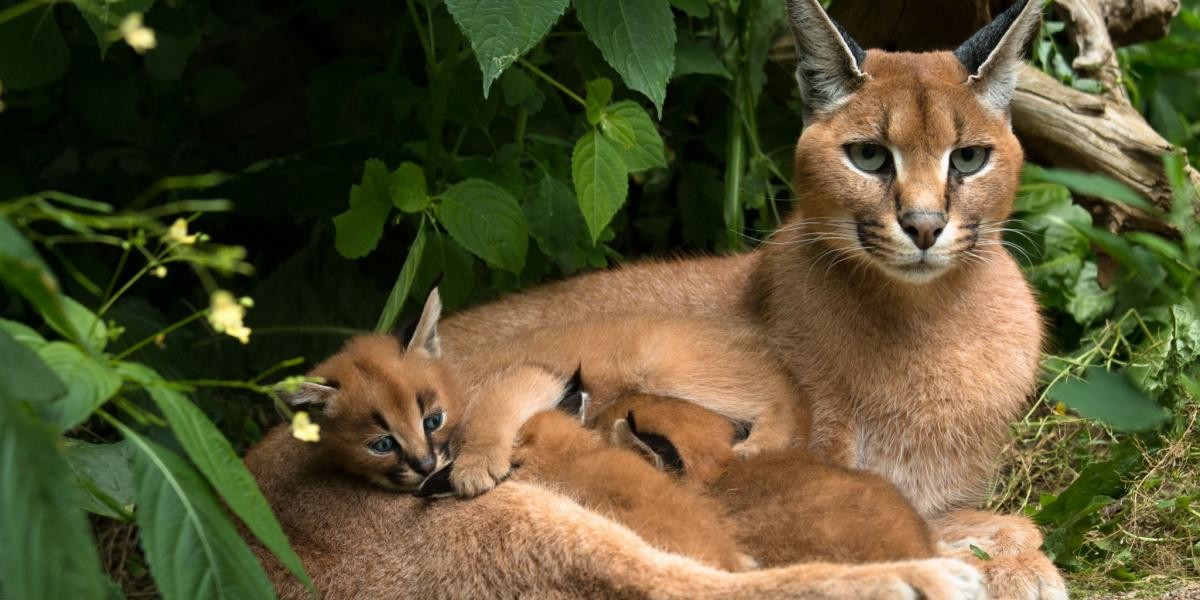
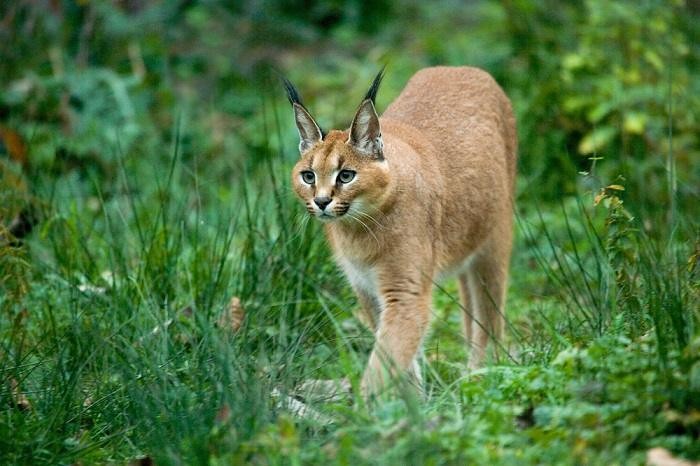
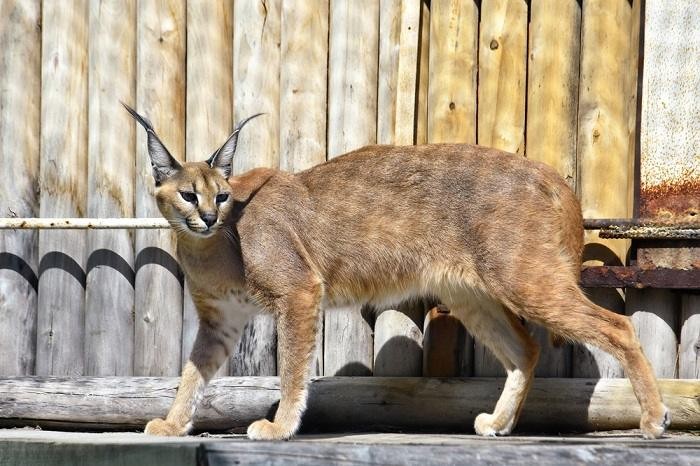
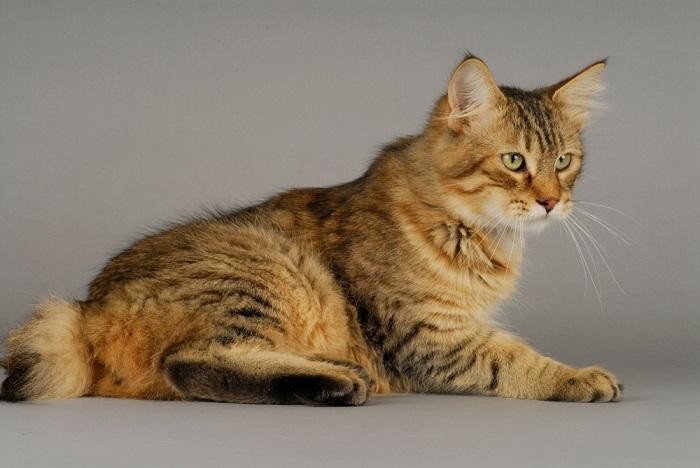
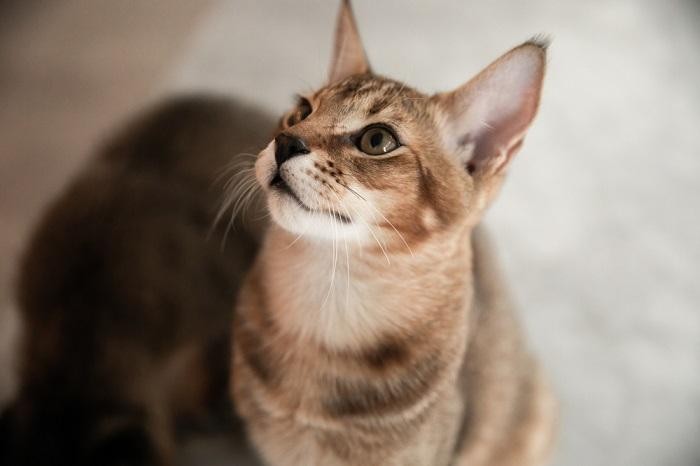
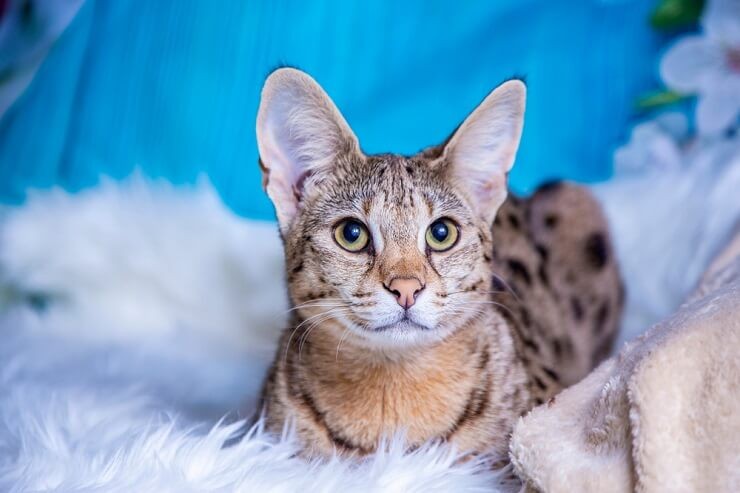
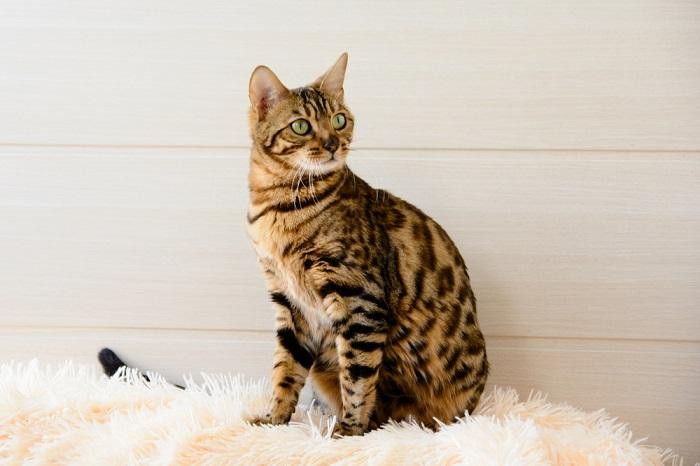

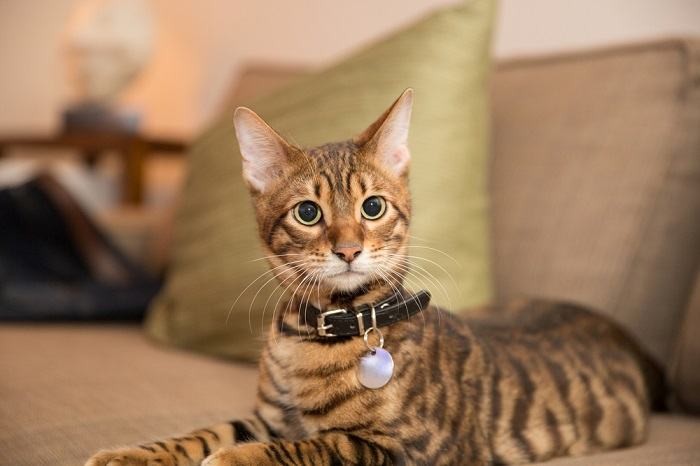
6.3. Pixie-Bob
Despite claims of being a bobcat-domestic cat hybrid, the Pixie-Bob originated from a large, short-tailed male cat with a classic pattern and a domestic female cat. One kitten, named Pixie, possessed a reddish-fawn coat and a wild appearance, inspiring the breed’s development. Pixie-Bobs are known for their loving, active, and social nature, often described as dog-like.
6.4. Chausie
The Chausie resembles the caracal with its sandy, reddish-brown, or gray coat. This hybrid breed was developed in the 1990s by crossing a jungle cat (Felis chaus) with domestic cats. The Chausie’s black grizzled ticked tabby pattern is unique to the breed, inherited from the jungle cat. Chausies are active, athletic, and sociable.
6.5. Savannah
The Savannah is a hybrid breed resulting from the cross between an African serval and domestic cats. Servals (Leptailurus serval) are small wild cats native to Africa, characterized by slender bodies, small heads, and large ears. Savannahs are curious, outgoing, and assertive, enjoying water play and requiring ample exercise and mental stimulation.
6.6. Bengal
The Bengal is another hybrid breed created by breeding domestic cats with the Asian leopard cat (Prionailurus bengalensis). Bengals exhibit unique coat patterns, including rosettes reminiscent of leopards, jaguars, and ocelots. Bengals are energetic, outgoing, curious, and affectionate.
6.7. Serengeti
Despite its resemblance to the African serval, the Serengeti contains no serval blood. The breed was developed using Bengals and Oriental Shorthairs, with the Bengal contributing a small amount of wild cat blood from the Asian leopard cat. Serengetis are confident, friendly, and active, communicating through meowing.
6.8. Toyger
The Toyger was developed to resemble a miniature tiger with minimal wild cat blood. The breed originated from a domestic cat, a Bengal, and a street cat from India. Toygers display a bold vertical striped pattern and circular markings on the head, similar to those found on tigers. Toygers are docile, smart, and very friendly.
7. Frequently Asked Questions About Caracals
7.1. Are caracals friendly to humans?
Caracals are wild animals and not inherently friendly towards humans. In the wild, caracals are solitary animals that prefer to live alone. Even caracal kittens bred to be sold as pets retain wild instincts, including an aversion to humans.
7.2. Is a caracal cat aggressive?
Caracals, even those bred to be sold as pets, retain their wild instincts. They can be aggressive towards humans and other animals like pet cats and dogs. Although caracals raised from kittens might learn to live with humans, these are still wild felines and can be extremely unpredictable, even dangerous. Like housecats, caracals will make sounds that warn of impending aggression, including growls and hisses. Attempting to tame a caracal found in the wild is not recommended by wildlife experts.
7.3. Can a caracal hurt you?
Caracals are small, so caracal attacks on humans are rare, however they do happen on occasion, especially when people keep these exotic animals as pets. Any wild animal, including caracals, can be dangerous if cornered. Caracals are more likely to hurt children and the elderly, and can injure or even kill other pets like cats and dogs.
7.4. How much does a caracal cost?
Breeders raise and sell caracals as pets, and they can cost exorbitant amounts. Wildlife experts strongly warn against keeping caracals as pets, even if it is legal to do so in your state.
8. PETS.EDU.VN: Your Guide to Responsible Pet Ownership
At PETS.EDU.VN, we understand the allure of unique and exotic pets, but we prioritize the well-being of both animals and their potential owners. We provide comprehensive information and resources to help you make informed decisions about pet ownership.
8.1. Expert Advice and Information
Our team of experienced veterinarians, animal behaviorists, and pet care professionals offers reliable and up-to-date information on a wide range of topics, including:
- Species-specific care requirements
- Nutritional needs
- Health and wellness
- Behavioral issues
- Training techniques
8.2. Responsible Pet Selection
We advocate for responsible pet selection, encouraging prospective owners to carefully consider the long-term commitment and resources required to provide a happy and healthy life for their animal companions.
8.3. Support and Resources
PETS.EDU.VN is committed to providing ongoing support and resources to pet owners, helping them navigate the challenges and joys of pet ownership.
Considering bringing a caracal into your home? Before making such a significant decision, explore the comprehensive resources available at PETS.EDU.VN. Discover alternative exotic-looking domestic cat breeds that can provide companionship without the risks and ethical concerns associated with owning a wild animal.
Ready to learn more? Visit PETS.EDU.VN today and embark on a journey of responsible and fulfilling pet ownership!
Contact us:
- Address: 789 Paw Lane, Petville, CA 91234, United States
- WhatsApp: +1 555-987-6543
- Website: PETS.EDU.VN
By prioritizing responsible pet ownership and providing access to reliable information, pets.edu.vn empowers individuals to make informed decisions that benefit both animals and their human companions.